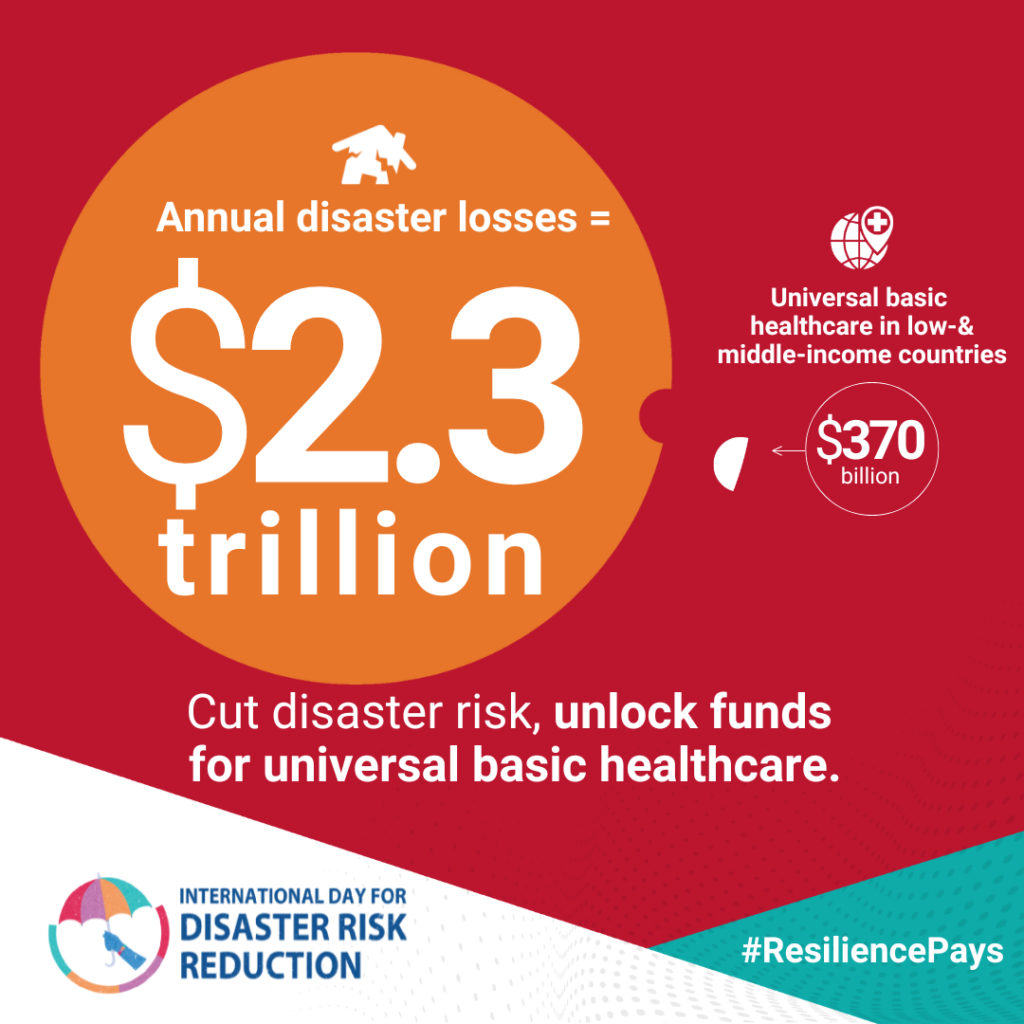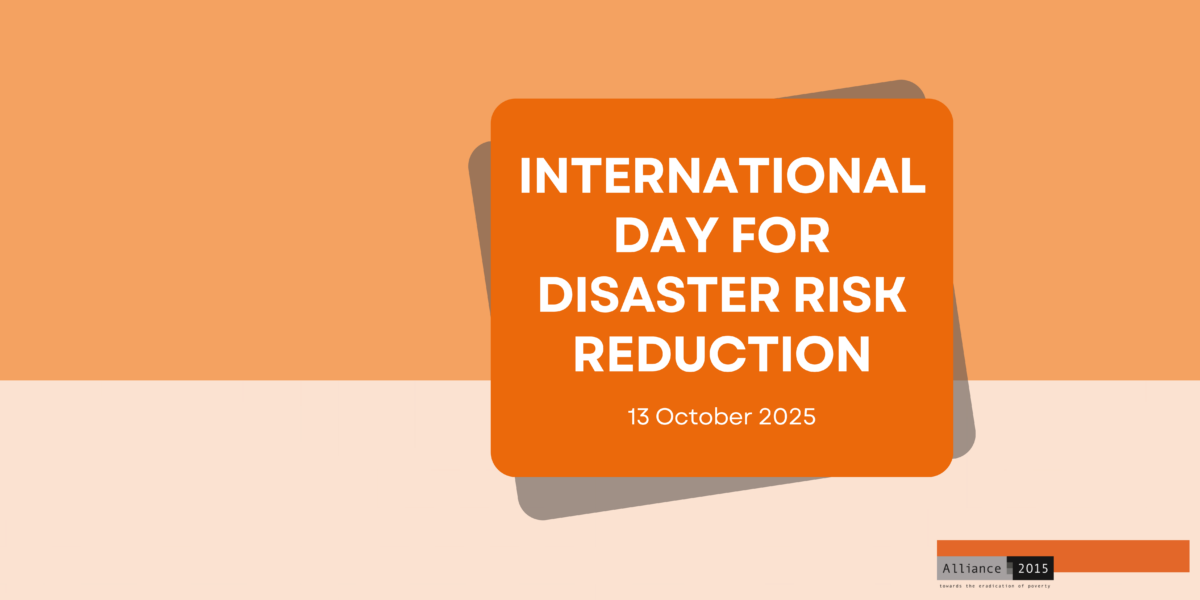The 13 October marks the International Day for Disaster Risk Reduction. It is a moment to acknowledge global progress in reducing disaster risk, while also recognizing the urgent work that remains. Established by the United Nations General Assembly in 1989, the day promotes a global culture of risk-awareness and disaster reduction. It highlights the importance of international cooperation, community preparedness, and long-term resilience strategies in saving lives and protecting livelihoods.
Disaster Costs Are Climbing, But So Can Our Resilience
In recent years, disasters have grown in both frequency and impact. Record-breaking floods, wildfires, droughts, and storms, often driven by climate change and unsustainable development, are increasing the exposure of people and economic assets to hazards. The cost is staggering: direct disaster losses now total approximately $202 billion per year, but when accounting for indirect and long-term impacts, the true global cost rises to nearly $2.3 trillion, according to the Global Assessment Report on Disaster Risk Reduction 2025.
While all nations are affected, developing countries bear the heaviest burdens relative to the size of their economies. Unfortunately, investments in disaster risk reduction have not kept pace with rising risks. According to the UNDRR, most governments allocate less than 1% of their budgets to disaster risk reduction, therefore covering only a fraction of what is needed. International support is also lagging: only 2% of Official Development Assistance (ODA) projects between 2019 and 2023 listed disaster risk reduction as an objective.
2025 Theme: “Fund Resilience, Not Disasters”
This year’s theme, “Fund Resilience, Not Disasters”, calls on countries and sectors to rethink how and where we invest. It reflects a growing recognition that preventing disasters is far more cost-effective than responding to them after the fact.
Based on outcomes from the Oslo Policy Forum and aligned with global development agendas in 2025 (including COP30, the G20, and the Global Platform for Disaster Risk Reduction) this year’s theme calls for two critical actions:
- Increase funding for disaster risk reduction, both in national budgets and through international financial support;
- Ensure all public and private investments are risk-informed and resilient, so that development progress is protected and future losses are minimised.
These actions are essential for fulfilling the ambitions of the Sendai Framework for Disaster Risk Reduction 2015-2030, a global agreement for reducing disaster risks and strengthening resilience to hazards by focusing on four priorities for action (understanding risk, strengthening governance, investing in reduction for resilience, and enhancing preparedness for response and recovery), especially in its final five years of implementation.

Our Members in Action
Our members have been actively engaged in disaster risk reduction across a variety of projects and partnerships. From early warning systems to climate-resilient agriculture, these initiatives are helping communities adapt, anticipate, and thrive in the face of increasing hazards:
- In Pakistan, Welthungerhilfe, in partnership with ACTED and Concern Worldwide, is supporting communities to act before disasters strike. By combining early warning systems with local preparedness plans, they are reducing the human and economic toll of climate-related hazards.
- In Central America, Helvetas is leading efforts in Integrated Water Resources Management, a vital foundation for community-level climate resilience. By empowering local water committees and strengthening governance, the project is helping mitigate the risks of droughts and floods.
- In Ethiopia’s North Gondar region, a collaboration between Concern Worldwide and Helvetas has introduced climate-smart agricultural practices that are reversing the effects of land degradation and water scarcity, transforming vulnerable farming communities into resilient, self-sustaining ones.
These stories highlight how localised, risk-informed investments in disaster risk reduction can make a lasting difference in vulnerable communities.
Play and Learn: Stop Disasters Game
Looking for an engaging way to explore disaster risk reduction? Try the Stop Disasters Game, a free, browser-based simulation developed by UNDRR. It is an interactive learning resource that challenges players to plan and build communities that are resilient to disasters like earthquakes, floods, tsunamis, and wildfires.
Resources
To dive deeper into disaster risk reduction, financing resilience, and the 2025 IDDRR theme, here are some key resources:


